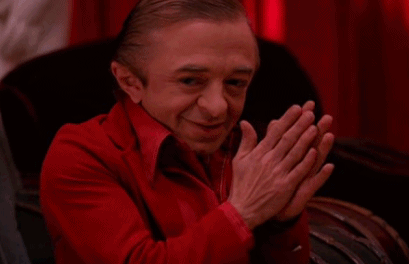I've been following Chris Sickels (Red Nose Studio) for a couple of years now, but I didn't realise that he has worked in EDITORIAL illustration. I didn't think his work COULD BE editorial.
He is an illustrator but illustrates using sculptures, puppets and tiny hand-made props. When Ben told me that Sickels's work has been published in 'The New Yorker' I felt so much better about this brief because I realised that physical illustration can be printed and showcased in this format too. Not your typical editorial illustration, but it can be found in this context. Magazines and newspapers have comissioned Chris Sickels to do it. They've paid money and CHOSEN this kind of 3D illustration over more traditional, pencil-on-paper methods.
Nothing is stopping me.
http://www.ideastap.com/ImageHandler.ashx?FileName=/Upload/CmsMedia/IdeasMag/ImageUpload/201501/RedNose1-8ad12e4d-635560756064708351.jpg&Width=540&Height=306&ImageMod=Crop&OutputFormat=HighQualityJpeg&CacheEnabled=True
The image above screamed out the answer to one query I had about printing: Can photos be printed in two colours? OF COURSE. Sickels has achieved a two-colour print by taking the photo in black and white before applying a blue colour overlay, turning all the image into values of the same colour.
I could easily use this same technique to turn my photos into two-colour prints.
'I build little 3D worlds and take photos of said scenes to have them reproduced on a page to grab a viewers attention for about three seconds and hopefully, lead them to read the story, article or investigate a package.'
Sickels crafts everything in the image: painting backdrops, making props, sculpting the figures and hand-drawing over the image - all in order to communicate something to the intended audience.
These images document and help to explain topics as analogies; the viewers see a little scenario that they can relate to or respond to.
FROM ROUGH TO MODEL
http://www.ideastap.com/Upload/CmsMedia/IdeasMag/ImageUpload/201501/RedNoseInFocus-1a3d3d9e-635560757601016047.jpg
I've always wondered how other MAKERS make! I sometimes struggle to sketch and plan a sculptural piece because I never know what it will look like until it's made. I feel that I need to let the materials choose how they will look and not plan anything too much, or it will seem too staged and artificial.
Sickels's roughs are so similar to his final photographs - very well planned! Even considered the lighting in his roughs. THEY DON'T LOOK ARTIFICIAL. Sickels, as the photographer and designer, is the director. He has to control all variables and make creative decisions in order for the photograph to look the way he intended, so this is a good process for planning the shot.
Further Reading: http://www.ideastap.com/IdeasMag/the-knowledge/chris-sickels-red-nose-studio-3D-illustration
http://www.howdesign.com/design-creativity/design-inspiration/chris-sickels/








